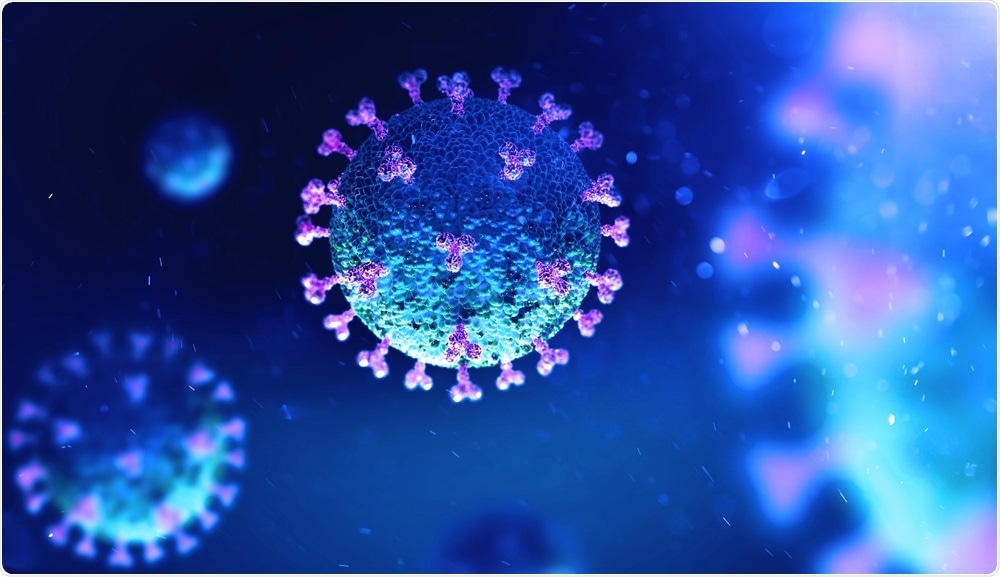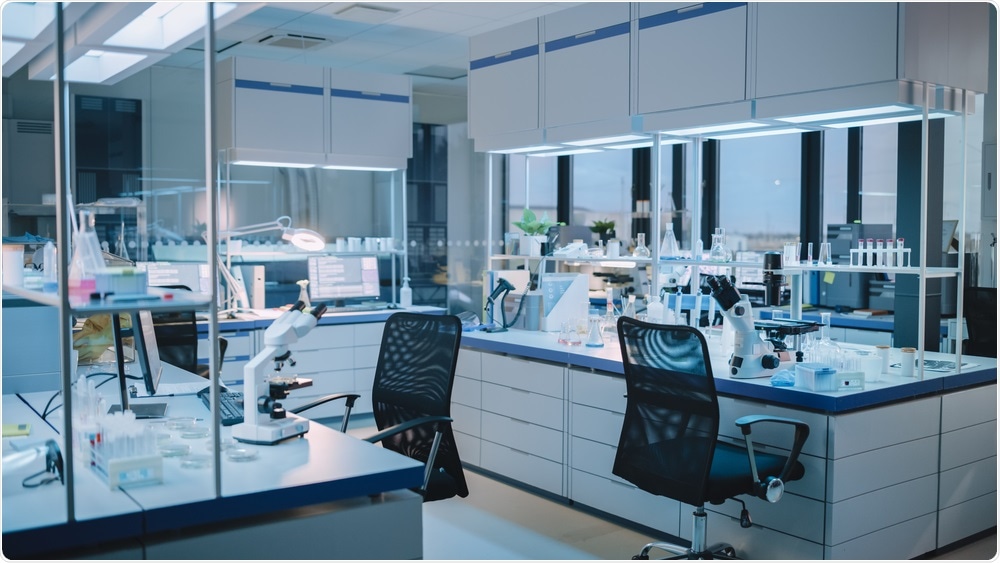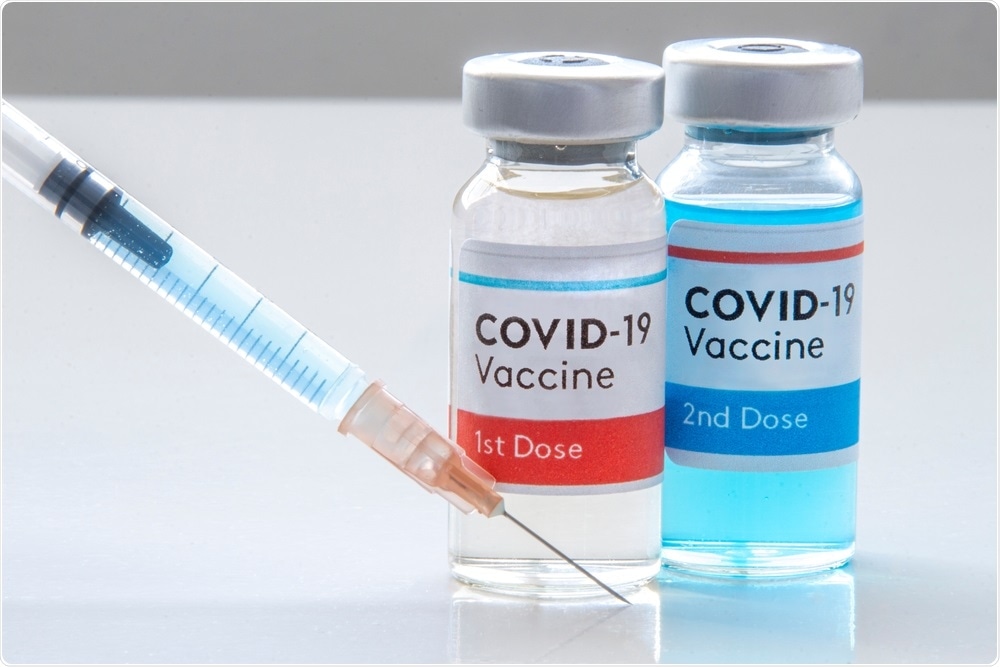In this interview, News-Medical talks to Dr. Yuning Chen, about the work he does with Sino Biological and how they have adapted their research & development to the COVID-19 pandemic.
The COVID Effect: Research During the COVID19 Pandemic
Could you give our readers an introduction to your background and your role at Sino Biological?
I am a Research and Development Manager at Sino Biological. I have a background in protein biochemistry and completed a PhD at Ohio University in 2012 before working for a few years as a postdoc at Penn State. My research in this role focused on plant-based proteins and polysaccharides.
In 2016, I went back home to China, where I joined a small biotech company. I worked there for two and a half years, focusing on antibody-related research and development.
I joined Sino Biological in March of 2019, taking charge of recombinant protein design and working on monitoring recombinant protein expression and development platforms.
What does Sino Biological focus on as a company, and what kind of specialties does it bring to the market?
Sino Biological is a biotech company at its core. We devote our resources to the development of high-quality recombinant proteins and antibodies, and our products are mainly used to support research and development in the life sciences and drug development fields.
The company was established in 2007, and our CEO, Dr. Liangzhi Xie, is an MIT laureate. His specialty is recombinant protein expression using mammalian cells - the technical cornerstone on which the company is based. The company also manages a team that specializes in antibody development.
We do a lot of product development work using this mammalian cell recombinant protein expression platform. This work has become increasingly comprehensive in terms of the capacity of recombinant protein expression to be integrated into different platforms such as insect cells, E. coli and yeast.
Sino Biological’s comprehensive portfolio covers a wide range of techniques from antigen discovery to antibody development.
COVID-19 has been a huge topic of discussion for many reasons, but how did Sino Biological operate within infectious disease research before the pandemic?

Image credit: Motorolka/Shutterstock.com
Our main technical platform is recombinant protein and antibody development, and we use this platform to develop reagents against different infectious diseases known to affect human beings.
For instance, we have a large collection of recombinant proteins from influenza, HIV and Ebola. Our goal is to develop a range of products so that these can be deployed as and when they are needed, in any shape or format, to move the research into an infectious disease forward as quickly as possible.
When an outbreak or pandemic occurs, time is key. Our goal is to have quick and high-quality reagents ready for this eventuality, inevitably helping us deal with future pandemics. We use the recombinant protein expression technique to prepare these viral protein antigens or bacterial protein antigens.
Creating these proteins can be challenging. Each protein has specific characteristics depending on the kind of virus it is derived from.
Even though we have several very well-established recombinant protein expression platforms in place, making proteins from different viruses or even different variants of proteins from the same virus requires specific experience and expertise.
Before the COVID-19 pandemic, we invested a lot of resources into establishing platforms able to express as many recombinant viral proteins or bacterial proteins as possible. This allowed us to familiarize ourselves with the process and develop techniques that enabled us to be better prepared for future pandemics.
We have also developed a range of ‘stock antibodies’ that can be deployed quickly for immunological assay development once a virus has been found to be similar to an existing virus.
For example, COVID-19 is similar to the SARS outbreak that occurred around a decade ago.
SARS antibodies were useful at the beginning of the pandemic to develop quick serological assays or to support companies working in vaccine development to use these antibodies as detection reagents, allowing them to assess the efficacy of their vaccines.
Before this pandemic, our work was mainly focused on preparation, with a strong learning curve. We are continually trying to examine the protein biology of viruses and to try to understand these.
When the COVID-19 pandemic arrived, how did that impact your research processes and your product development pipeline?

Image credit: Andrii Vodolazhskyi/shutterstock.com
COVID-19 had a major impact on product development timelines. Everything is now squeezed into very compact timelines because the virus is changing all the time and we have to be able to keep up with it.
As well as developing wild-type proteins, we are constantly trying to develop mutated variant proteins from the virus using our platforms.
Customers are beginning to require a significant quantity of proteins, meaning that the capacity of the platform is being stretched. We do have a high throughput common antibody expression platform with which we aim to create recombinant antibody libraries for clients.
Due to the emergency situation created by this pandemic and the characteristics of the variants, the receptor binding domain of the SARS-CoV-2 spike protein has become the focus of a great deal of research and drug development efforts.
The receptor binding domain (RBD) changes constantly, but these changes generally occur in a few amino acids at most.
This is similar to antibody expression, whereby changes in antibodies align in their CDR regions, allowing us to build a template of an antibody and by changing the CDR template to quickly generate a library of vectors for antibody expressions.
When working with SARS-CoV-2 variants, we build a template for the SARS-CoV-2 spike protein or segments of the spike protein. This means that whenever a variant or variants are encountered, we can quickly produce these recombinant proteins and supply them all over the world.
The pandemic has had a huge impact on the world, to a degree that we have not experienced in our lifetime.
This has resulted in research changing significantly, but it has also affected other elements of our business such as logistics, for example, in terms of dealing with the customs. We have generally been working to adjust to circumstances as these continue to change and develop.
How has the company adapted to other factors like quarantine requirements, remote working or travel restrictions?

Image credit: Gorodenkoff/Shutterstock.com
Our work does not afford us the luxury of working from home, and the necessary restrictions in place due to the pandemic have at least doubled or even tripled our workload.
Travel restrictions have meant that many events, breaks and holidays have had to be canceled – this has been a major issue and emotionally challenging because our workforce is very international, with families all over the world. Thankfully we have managed to endure this hardship and are adapting to this new way of working.
One issue we have had to address is that some of our workers live in or have traveled to high-risk areas. This meant that when they returned to work, they had to quarantine for 14 days. For quite some time, we were operating with limited personnel.
This put additional pressure on our lab technicians and the people who perform all the experiments - I think they have been real heroes.
How do you keep track of new variants of COVID-19 and where these are coming from? How does your approach with recombinant proteins allow you to respond to this?
For a variant to become established and to have a degree of prevalence, it requires some time to outcompete its peers. To monitor this, we are constantly liaising with reliable sources such as the CDC and WHO.
These organizations provide regular updates on these variants of concern, documenting specific changes in these variants and categorizing these based on the spike protein. This informs our efforts to create recombinant spike proteins.
There is also an open source online database called the GSAID, where people deposit a range of sequence information. We have established an extensive array of data for this virus, which we can use in conjunction with the GSAID database to obtain sequences.
Combining these three resources enables us to identify variants of concern, determine the mutations occurring on these variants and convert this information into recombinant variant spike proteins as quickly as possible.
The spike protein is where the virus interacts with the whole cell to enter the cell, and changes can inhibit antibody protection and compromise the efficacy of therapeutic antibodies.
The nuclear capsid protein behaves differently, however. For example, this does not change much, but when it does change, researchers tend not to track the changes as actively as those of the spike protein.
The role of nuclear capsid protein is to stabilize the virus genome, and this is becoming the target of choice when developing serological assays to quickly detect COVID-19 in humans.
With the help of GSAID, we are conducting data mining work to identify high frequency mutations of this nuclear capsid protein and different versions of this protein accordingly.
This allows us to test the antibodies that we have developed against this particular protein to see if these mutations would compromise their efficacy, enabling us to select broad-spectrum antibodies that are able to deal with different types of mutations.
These antibodies can also be used to develop a relatively broad spectrum serological assay to detect COVID-19.
How does the recombinant protein approach support the development of vaccines that are able to protect against increasing numbers of variants, and what are the challenges when trying to predict and account for changes in the variants in terms of vaccine development?

Image credit: Oasisamuel/Shutterstock.com
This is a widely discussed topic, with many labs working to develop a universal vaccine for COVID-19 and its variants. Work is ongoing to develop these vaccines for other viruses as well, including a universal flu vaccine that has just entered its phase one clinical trial.
The goal of this universal vaccine is to prompt the body to generate antibodies that recognize and neutralize different variants of the protein.
The COVID-19 protein changes at a relatively high frequency because it is an RNA virus, but these changes are not significant. While these changes will not negate the efficacy of current antibodies, they may reduce it.
One approach would be to carefully study the core structure of the protein, targeting those regions where mutations do occur. Unfortunately, these occur at a lower frequency and it may be challenging to identify a region that is ‘conserved’ between different variants.
The SARS-CoV-2, S2 region of the spike protein is relatively more stable, prompting researchers to focus some of their effort on this region to develop a universal vaccine for the SARS-CoV-2 virus.
It may be possible to solve this problem by serving a recombinant protein format of the vaccine or an mRNA form of the vaccine.
Suppose we can use one candidate, one protein, to solve the problem. Why can’t we use several proteins in combination to cover as many epitopes as possible and adapt to as many changes as possible? This is actually the basis for the current universal flu vaccine.
What has the impact of COVID-19 been on the general landscape of virus-related biological reagent development, and if there are other viral epidemics in the future, do you think the response will be improved due to the experiences from this pandemic?
People say that if you want to unite the human race, you have to give them a common enemy. The pandemic has offered us a common enemy, and our responses have been unprecedented. This is certainly the case in the scientific community, where we have seen unprecedented global collaborations.
Once the virus had been identified, its genome was sequenced and made available worldwide. This led to worldwide efforts in vaccine development, as well as protein and antibody development in our case.
This global effort has been founded on shared information and collaborative research. I look at preprints on a daily basis to track the progress that we are making, both in terms of therapeutics development and in terms of understanding the biology of this virus.
The preprint platform highlights all the information that is currently available, and even though these papers are not yet peer-reviewed, the information presented is useful in terms of maintaining an overview of the field and promoting collaborations.
We are seeing more research embracing new technologies, particularly the use of RNA vaccines which had not been used before the advent of COVID-19.
Several RNA vaccines have now been developed which have proven to be effective against this virus, and I think these technical platforms will help pave the way for future vaccine development.
The technology has existed for a long time, but it took a situation like the COVID-19 pandemic to push for us to accept and use it.
As the RNA vaccine works, this has given the scientific community another tool for future pandemic responses.
Since we do not currently have official medication to treat COVID-19, people are using well-established or FDA-approved drugs to treat patients and reduce their symptoms.
Many therapeutic antibodies have been developed based on convalescent plasma resulting from COVID recovery, and some groups are digging deep into old inventory to look at convalescent plasma from SARS patients, discovering antibodies suitable for use against COVID.
Repurposing existing treatments in this way can substantially cut the development time of novel therapeutics.
In terms of future outbreaks, I would hope that we can learn from this pandemic and we can better embrace new technologies and new ideas.
It is also going to become increasingly important to improve public education around emerging infectious diseases. I read a book called Spillover, which highlighted that because we are taking over so much of the planet’s surface area via expanding urbanization and rising populations, spillovers of infections are inevitable.
I sincerely hope that this painful experience will prompt the public to be better prepared for future outbreaks and that society will be better prepared, both technologically and mentally, to deal with emergent infectious diseases.
About Dr. Chen
Dr. Yuning Chen is a Research and Development Manager at Sino Biological. He has a background in protein biochemistry and completed a Ph.D. at Ohio University in 2012 before working for a few years as a postdoc at Penn State. His research in this role focused on plant-based proteins and polysaccharides.
Dr. Chen joined Sino Biological in March of 2019, taking charge of recombinant protein design and working on monitoring recombinant protein expression and development platforms.

About Sino Biological Inc.

Sino Biological is an international reagent supplier and service provider. The company specializes in recombinant protein production and antibody development. All of Sino Biological's products are independently developed and produced, including recombinant proteins, antibodies and cDNA clones. Sino Biological is the researchers' one-stop technical services shop for the advanced technology platforms they need to make advancements. In addition, Sino Biological offers pharmaceutical companies and biotechnology firms pre-clinical production technology services for hundreds of monoclonal antibody drug candidates.
Sino Biological's core business
Sino Biological is committed to providing high-quality recombinant protein and antibody reagents and to being a one-stop technical services shop for life science researchers around the world. All of our products are independently developed and produced. In addition, we offer pharmaceutical companies and biotechnology firms pre-clinical production technology services for hundreds of monoclonal antibody drug candidates. Our product quality control indicators meet rigorous requirements for clinical use samples. It takes only a few weeks for us to produce 1 to 30 grams of purified monoclonal antibody from gene sequencing.